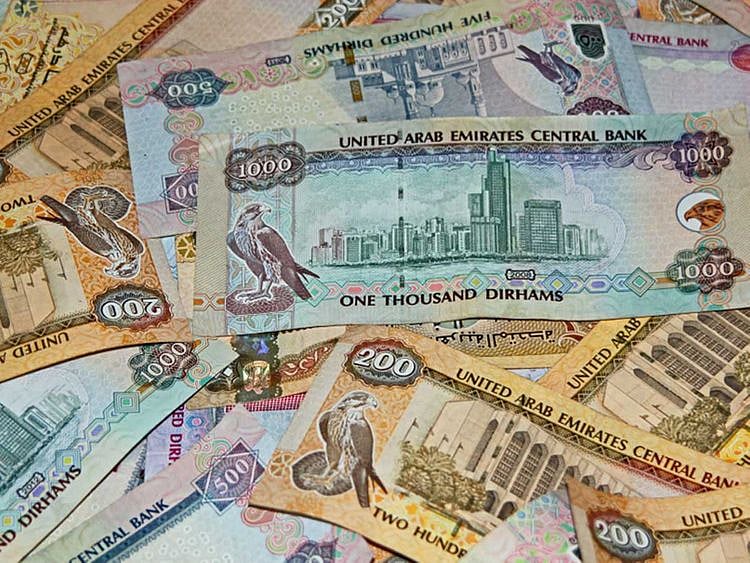Creation, history and evolution of the UAE dirham
The Central Bank of UAE issues the country's banknotes and coins

Also In This Package
Dubai: The UAE dirham, the currency of the UAE was introduced in circulation in 1973.
Prior to the establishment of the Central Bank of UAE in 1980, the country had the ‘Currency Board’ established as per Union Law No. 2 of 1973, which was replaced by Law No. 10 of 1980 concerning the Central Bank, Monetary System and Organisation of Banking.
The Currency Board issued the national currency dirham in 1973 for the first time. Prior to this, the UAE had currencies such as the Bahraini Dinar and the Qatari and Dubai Riyal in circulation.
The UAE dirham was introduced in circulation for the first time on 19 May 1973. The Qatar and Dubai riyal were in circulation since 1966 in all of the emirates except Abu Dhabi, where the dirham replaced the Bahraini dinar.
Bank notes and coins
The Central Bank of UAE issues the country's banknotes and coins.
To combat counterfeiting of paper currency, a watermark of the national emblem and several other security features are used on each note. Currently the CBUAE issues currency notes in denominations of 5, 10, 20, 50, 100, 200, 500 and 1000.
Coins are issued in the denominations of 1, 50 fils and 25 fils. The coins of 1, 5 and 10 fils are not used in everyday life. So, all amounts are rounded up or down to the nearest multiples of 25 fils.
In addition to regular coins, since 1976, the Currency Board and then the CBUAE have minted several commemorative coins celebrating different events of the UAE.
Respect to the currency, violations and penalties
The UAE national currency carries the name and emblem of the UAE; hence, the moral value is greater than its material value, and any behavior that is deemed an insult to the currency, is a crime punishable by the UAE law.
According to Article 141 of Federal Law No. 14 of 2018 Regarding the Central Bank and Organization of Financial Institutions and Activities, whoever publicly and intentionally mutilates, destroys or tears up currency, shall be punished by a fine of one thousand Dirham (AED 1,000) or 10 times the value of the mutilated, destroyed or torn currency, whichever is higher.
The UAE laws and legislations have criminalized all practices and acts that violate public morals or underestimate the emblem of the state along with its national currency. According to Article 176 of the Penal Code Federal, anyone who insults, mocks, harms the reputation, prestige or statute of the state, its flag, its emblem, its symbols or any of its institutions, shall be punished for a minimum period of 10 years and a maximum of 25 years and face a fine of no less than AED 500,000.
Currency peg and its rationale
The UAE dirham is pegged to the US dollar. A currency peg is a policy in which a national government sets a specific fixed exchange rate for its currency with a foreign currency or a basket of currencies.
On January 28, 1978, the dirham was officially pegged to the International Monetary Fund’s (IMF's) special drawing rights (SDRs). In practice, it is pegged to the US dollar for most of the time. Since November 1997, the dirham has been pegged to the US dollar at the rate of 3.6725 dirhams, which translates to approximately 1 dirham = 0.272294 dollar.
Pegging a currency stabilizes the exchange rate between countries. Doing so provides long-term predictability of exchange rates for business planning. However, a currency peg can be challenging to maintain and distort markets if it is too far removed from the natural market price.
Because of the country's reliance on the oil industry, officials see it advantageous to peg its currency to the US dollar. As oil prices are denominated in US dollars, by pegging its currency against the greenback, the UAE government can reduce the volatility of its exports.
The country's economic indicators and current account should be maintained at optimal levels to maintain the peg. Any sharp rise or fall in current account could place upward and downward pressure on pegs. The CBUAE adjusts interest rates at tandem with the US Fed rates to ward of speculative pressures on the currency.
Sign up for the Daily Briefing
Get the latest news and updates straight to your inbox
Network Links
GN StoreDownload our app
© Al Nisr Publishing LLC 2025. All rights reserved.